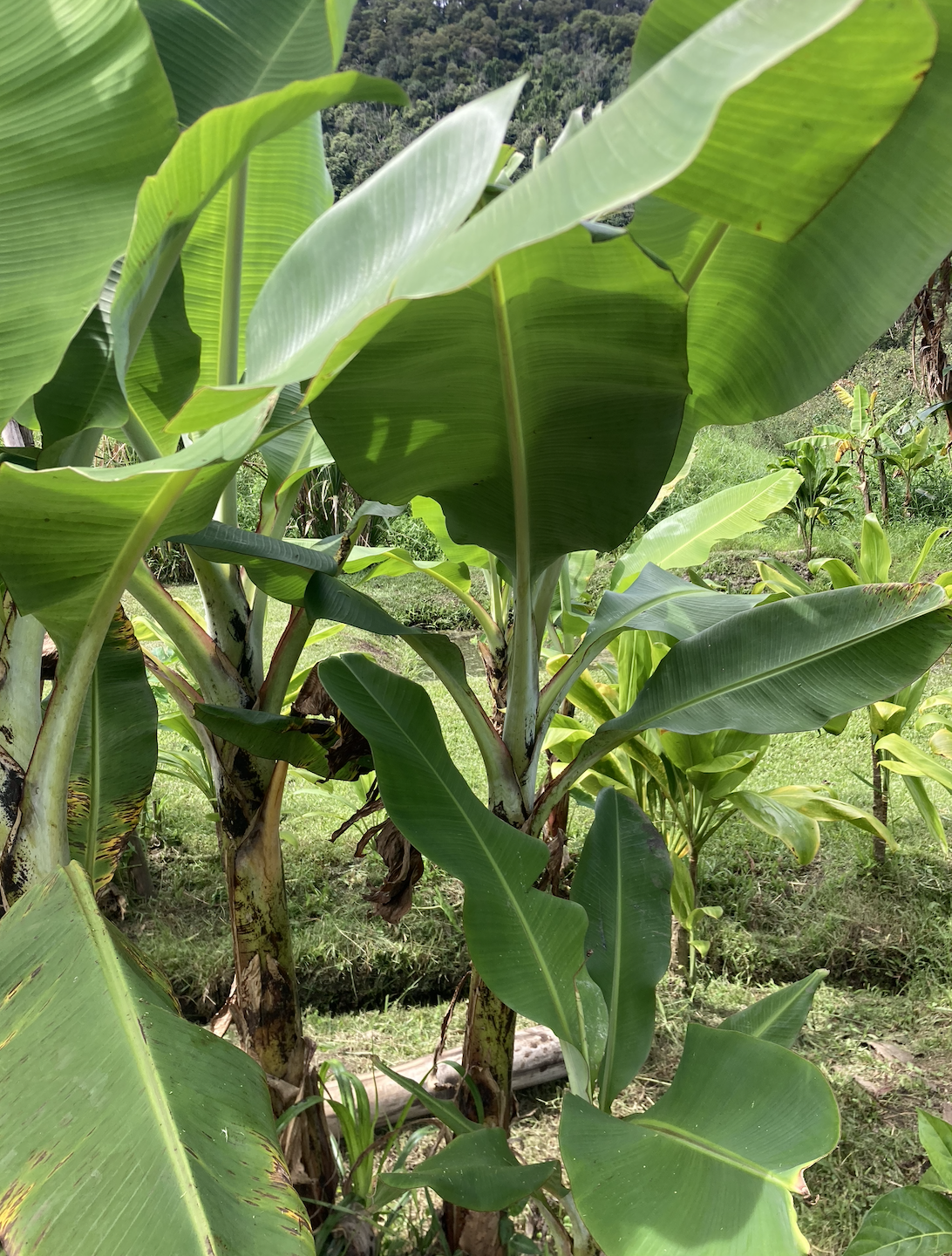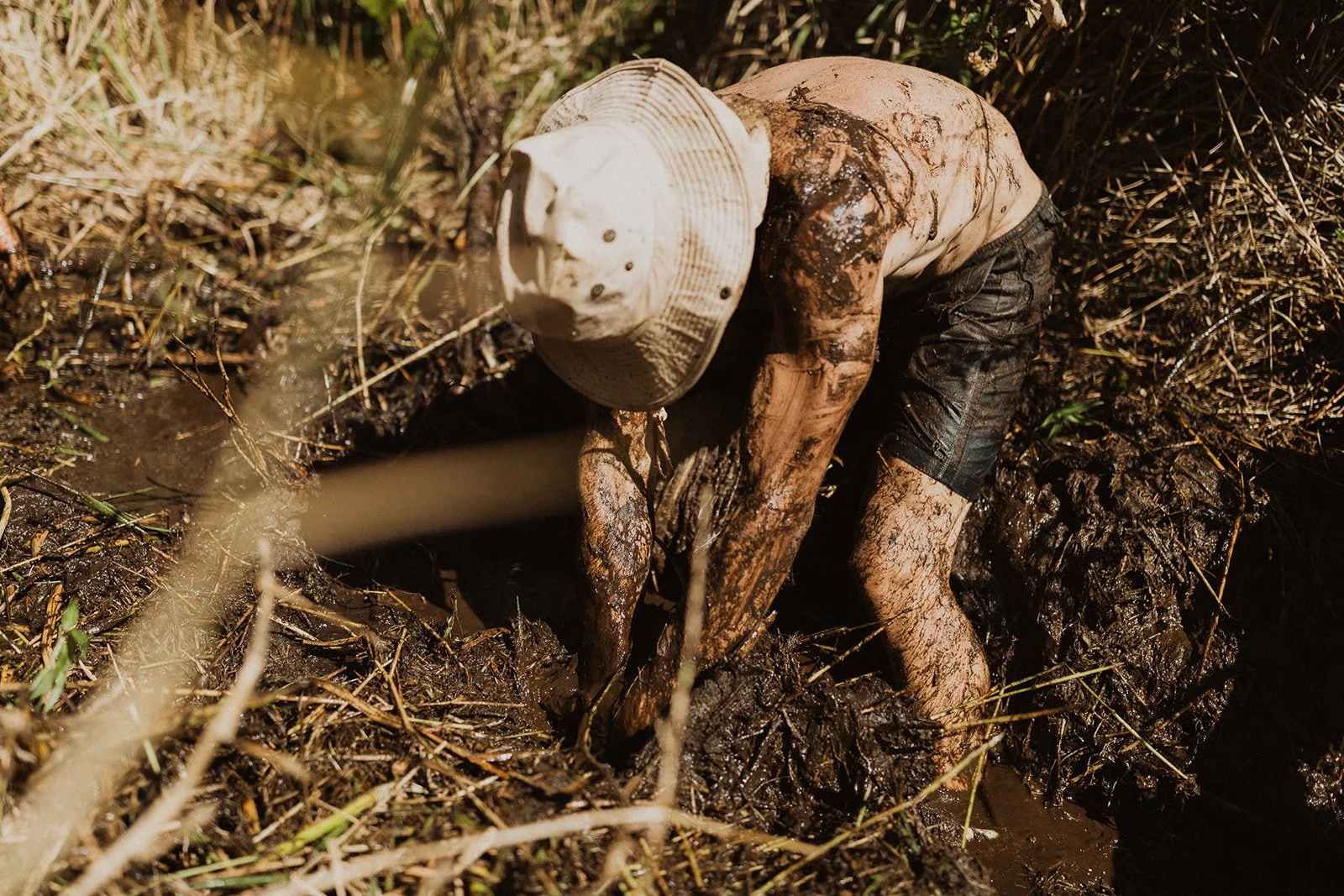We are a community food production cooperative working to revitalize Hawaii’s staple crops by inspiring more farmers to serve as change-makers. EMF has begun restoring dormant valleys in East Maui and is striving to become the largest, most nutritious, food producing region in Hawai‘i.
By working together, East Maui Farmers will be able to offer consistent, high-quality local food products that are delicious, versatile, healthy, accessible, and sustainable. The co-op is particularly committed to the revival of kalo for the purpose of restoring the Country of Hawaii’s identity and food security. Kuleana (stewardship responsibility) is the guiding principle at EMF. Our vision is a thriving network of Stewards that uplift the ‘aina and society as a whole. We are here to rebuild a Hawai‘i that we can all be proud of.
KULEANA
KULEANA
Creating opportunities for the generational residents of East Maui and the broader island community to better maintain East Maui through the implementation of watershed restoration and land management initiatives.
East Maui Farm features a conglomerate of independently operated kuleana restoration initiatives from Ha‘iku to Kahikinui, each working diligently to increase regional agricultural assets and contribute to environmental and community well-being by implementing the principles of Hawaiian land and resource management. EMF maintains a registry of dedicated volunteers that contribute effort at their preferred farms and restoration sites.
Honomanu
The restoration of Honomanu Ahupua‘a began in 2019. It took volunteers six months to take out two large clusters of hau bush and a field of cane grass to begin the process of digging an ‘Auwai to a pool of surface water located on the valley’s flat. The lo‘i kalo are being irrigated by excess surface water from Punalau / Kolea stream due to the lack of Honomanu stream’s flow and consistency. Seven wetland and three drylands taro patches have been restored to date. The farm’s perimeter has been filled in with bananas, papayas, ti-leaves, lemongrass and more. The goal is to restore every taro patch on the valley’s flat. Video
Nahiku
Along the Hana Highway in the ahupua‘a of Nahiku you will come across patches of watercress maintained by the East Maui Farm team. These patches are used to feed the community of East Maui and provide a delicious and highly nutritious leafy green grown by way of traditional aquaponics. Volunteers plan to scale the patches to surrounding areas and this expansion is dependent upon the free flow of spring water. Much of EMFs ability to grow food for Hawai‘i is reliant upon access to land and water.
Kahikinui
In 2018, a group of kuleana stewards began collecting ecological data to better understand the condition of the Kahikinui forest - and how humans, ungulates and conservation activities impact the landscape. The group continues to monitor the forest’s well being through active observation and reporting. Weekly hiking trips for the purpose of gathering wild protein provides stewards with the opportunity to log forest conditions and keep animal populations at bay. East Maui Farm’s goal for Kahikinui is to build a community ranch and formalize a hunting program to better manage the hoofed animals and demand for subsistence access. The group has been building small enclosures to enable reforestation efforts. An investigative report was published in 2019 that highlights some of the challenges of the region and underlining culprits of prior mismanagement.
East Kaupakulua
A dryland taro patch was planted in the East Kaupakalua Ahupua‘a in 2020 to convey the intention of ecological restoration by generational Tenants and kuleana Stewards in the area. After nearly a century of pineapple farming which left pesticides and black plastic embedded in the ground, EMF is adamant about restoring vitality to the soil through planting nutrient fortifying cover crops as an initial step to revitalizing the area before food crops can be safely cultivated again. An ‘Ohi‘a tree was planted at the entry point to this parcel of land and remains as a figure of EMF’s established kuleana in this ahupua‘a.
East Maka‘iwa
East Maui Farm is working diligently to restore agricultural activity to the East Maka‘iwa ahupua‘a. Access to farming parcels has been restored and the infrastructure for water irrigation is being finalized. Dryland taro and sweet potatoes are the initial crops mapped for the area. The tenants of this area look forward to harnessing the help of our broader community to bring these food security goals to life.












